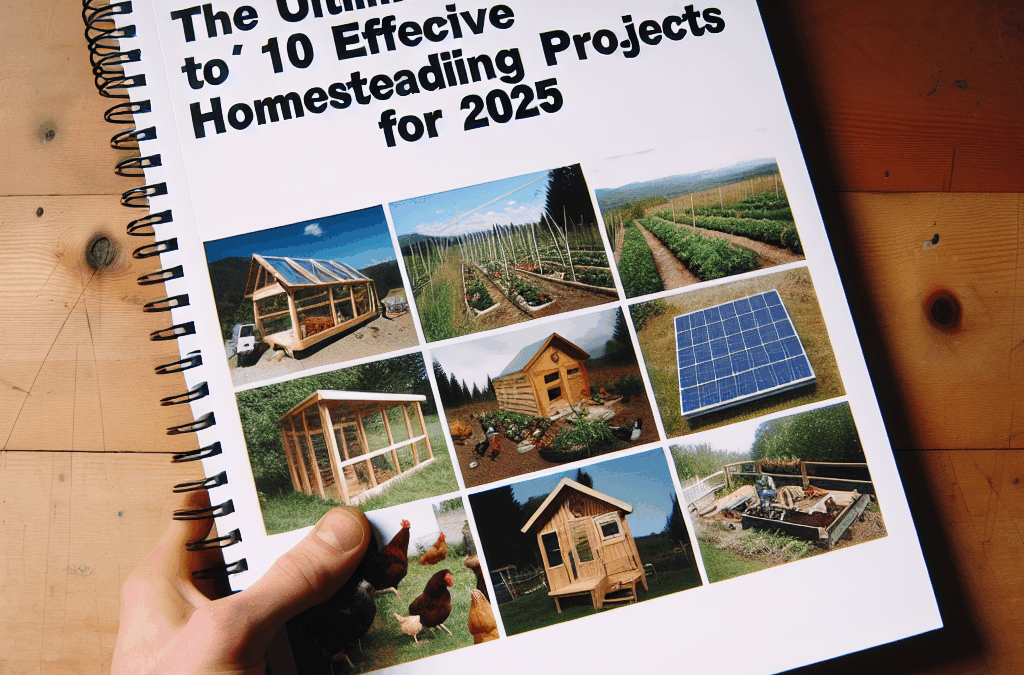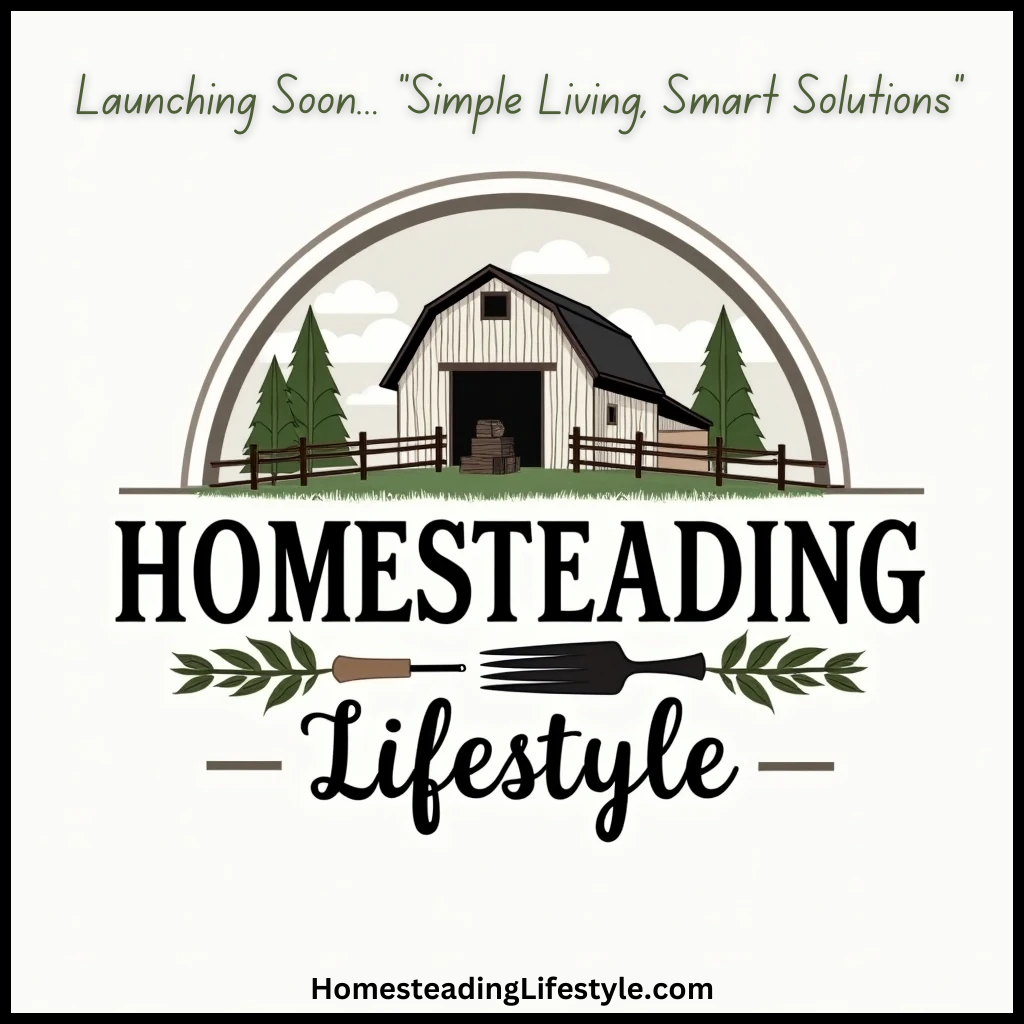- Wooden Greenhouse Construction
- DIY Composting Systems
- Building Raised-Bed Gardens
- Rainwater Harvesting Installations
- Raising Heritage Livestock
- Permaculture Design for Self-Sufficiency
- Solar Energy Projects
- Preserving Food: Canning & Dehydration
- DIY Woodworking Tools & Equipment
- Building Durable Homestead Fencing
1. Wooden Greenhouse Construction
Designing Your Greenhouse for Year-Round Growing
Building a wooden greenhouse is a popular DIY homesteading project that can extend your growing season into the colder months of 2025. Using sustainable, locally sourced wood not only reduces costs but also adds a rustic charm to your homestead. When designing your greenhouse, consider ventilation, insulation, and sunlight exposure to optimize plant growth. Proper planning ensures your greenhouse will be productive and durable.
A key consideration is choosing the right type of wood, such as cedar or cedar-treated pine, which resist rot and pests. Additionally, incorporating UV-resistant plastic or glass panels will maximize sunlight indirectly while protecting plants from harsh weather. Many homesteaders are now custom designing their greenhouses to fit small spaces or larger experimental gardens.
Getting hands-on with this DIY homesteading project can save hundreds of dollars compared to purchasing a prefab structure. Plus, if built correctly, a wooden greenhouse can last 10-15 years, making it a worthy investment for 2025âs growing food demands.
Building Tips and Essential Tools
Start by sketching your design and gathering all necessary tools, including saws, drills, and measuring tapes. Ambitious DIYers should consider adding automatic vents or solar-powered fans to enhance climate control naturally. Donât forget proper foundation work â concrete footings or gravel beds can ensure stability over time.
To keep construction environmentally friendly, consider using reclaimed wood or eco-friendly paints. Safety first: always wear goggles and gloves when working with power tools. Once completed, your homemade greenhouse can be a cornerstone of sustainable living this year and beyond.
2. DIY Composting Systems
Choosing the Perfect Composting Method
Creating a DIY composting system is one of the most impactful homesteading projects for 2025, providing nutrient-rich soil for your gardens. Depending on space and needs, there are several options: tumblers, bokashi bins, or traditional pile systems. Composting reduces household waste by up to 30% and recycles organic matter into usable compost.
For urban homesteads and small yards, a compost bin thatâs easy to turn with minimal effort works best. Larger farms can benefit from compost trenches or windrow composting. Experimenting with different methods saves money and helps tailor to your specific environment.
Itâs helpful to understand the science behind compostingâbalancing green and brown materials, maintaining moisture levels, and aeration are key factors. In 2025, integrating composting with worm farms or compost teas can boost soil health even further, making this DIY homesteading project a win for sustainability and productivity.
Tips for Successful Composting in 2025
Ensure your compost pile is located in a well-drained, partially shaded area. Regularly turning the compost accelerates decomposition, which is especially crucial in colder months. Keep a moist but not waterlogged environment; adding straw or shredded leaves can help maintain the right moisture level.
Introducing eco-friendly compost accelerators or biodigesters can enhance microbial activity naturally. Moreover, keep an eye out for pests or odors by covering the pile adequately and not including inappropriate materials like meat or dairy. In the coming years, composting will remain a cornerstone of sustainable homestead management.
3. Building Raised-Bed Gardens
Advantages of Raised Beds for Organic Gardening
Constructing raised-bed gardens is an excellent DIY homesteading project that offers better soil control, improved drainage, and easier access for planting and maintenance. Especially in 2025, with rising soil degradation and climate shifts, raised beds provide a resilient solution.
Using materials like cedar, recycled wood, or even stone, you can customize the size and shape to suit your garden space. Filling them with high-quality, organic soil mixtures increases productivity and reduces weed growth. This method is accessible for beginners and perfect for growing vegetables, herbs, and flowers.
This project also enables you to compact your gardening efforts into a smaller footprint, making efficient use of space. Itâs cost-effective and adaptable, making it a must-try DIY homesteading project for those committed to sustainable lifestyles in 2025.
Step-by-Step Guide to Building Raised Beds
Start by measuring your space and planning the dimensions of each bed. Use untreated wood or eco-friendly composite options for longevity and safety. Assemble the framework with galvanized screws, and then fill with a well-balanced soil mix that includes compost, peat moss, and vermiculite.
Creating a watering system underneath the raised beds can further improve water efficiency. Mulching around the beds retains moisture and suppresses weeds. Regularly maintaining and rotating crops in your raised beds will maximize yields over time.
4. Rainwater Harvesting Installations
Collecting and Using Rainwater Effectively
In 2025, rainwater harvesting continues to be a key DIY homesteading project that promotes self-sufficiency and reduces reliance on municipal water. Installing a basic rain barrel system or more extensive gutter and tank setups can effectively collect water from roofs, providing an eco-friendly watering source.
Designing your system to filter debris and prevent mosquito breeding is crucial. Larger-scale systems can include underground tanks or modular rainwater collection networks, suitable for farms or large gardens. Collecting rainwater not only conserves resources but also lowers water bills significantly.
Many homesteaders are now integrating smart controllers and automated valves into their rainwater systems for optimized usage. With proper planning, rainwater harvesting can become an efficient, scalable project for your 2025 homestead.
Installation Tips & Considerations
Choose durable, food-grade tanks for storing harvested rainwater. Position your collection system on an elevated surface for gravity-fed flow. Regularly clean and maintain gutters and filters to prevent blockages and algae growth.
Using rainwater for non-potable purposes like irrigation is a smart move. If you want to extend your harvesting capacity, consider adding additional tanks and linking systems for greater volume. This project is a cornerstone for eco-conscious living in 2025.
5. Raising Heritage Livestock
Choosing the Right Heritage Breeds for Your Homestead
Raising heritage livestock is an inspiring DIY homesteading project that supports biodiversity and preserves rare breeds. In 2025, more homesteaders are seeking resilient animals that are well-adapted to local environments and require fewer resources.
Popular choices include heritage chickens like Wyandottes or Rhode Island Reds, heritage pigs such as Berkshires, and native breeds of goats and cattle. These breeds often have better disease resistance and better foraging capabilities, making them ideal for sustainable homesteading.
Researching the specific needs, temperament, and care requirements of these breeds can help you make informed decisions. Raising heritage animals not only provides food but also contributes to conserving biological diversity.
Best Practices for Raising Heritage Livestock
Ensure proper shelter, nutritional plans, and health management tailored to each breed. Incorporate rotational grazing and pasture management to keep your animals healthy and productive. Many homesteaders succeed by setting up natural herd health protocols and fostering a humane environment.
Networking with other heritage breed enthusiasts can provide valuable tips and breed-specific knowledge. Successfully raising heritage livestock in 2025 supports both ecological balance and food sovereignty on your homestead.
6. Permaculture Design for Self-Sufficiency
Principles of Permaculture for the Modern Homestead
Implementing permaculture principles is arguably one of the most transformative DIY homesteading projects for 2025. It emphasizes creating resilient, efficient systems modeled on natural ecosystems, reducing work and inputs over time.
Design your homestead layout based on zones and sectors to maximize sunlight, wind exposure, and water flow. Companion planting, permaculture zones, and food forests are vital components that increase yields while conserving resources. This approach creates a sustainable, self-sufficient environment.
In 2025, permaculture aligns with global efforts toward regenerative agriculture and climate resilience. Itâs an empowering way to tailor your homestead to be more eco-friendly, productive, and autonomous.
Getting Started with Permaculture Design
Conduct a site analysis to assess natural features and resources. Develop a design plan that integrates water harvesting, mulching, and perennial crops. Take a layered approach by planting trees, shrubs, and ground cover to mimic natural systems.
Using simple tools like pencil and graph paper, or permaculture design software, you can plan and implement your food forest or forest garden. The result is a blueprint for a resilient homestead that thrives sustainably in 2025 and beyond.
7. Solar Energy Projects
DIY Solar Panel Setups for Off-Grid Power
Harnessing solar power remains one of the most popular DIY homesteading projects for those seeking energy independence in 2025. Building your own solar panel system can significantly reduce energy costs and carbon footprint.
Start with affordable DIY kits and learn how to assemble and install panels on your roof or ground. Pairing solar with battery storage ensures you have power even on cloudy days or at night. Advances in technology and decreasing costs make solar solutions accessible to most homesteaders.
In 2025, integrating smart energy management systems can optimize usage and prolong battery life. Whether youâre powering a small cabin or a large homestead, a DIY solar setup is both an economic and ecological resource worth mastering.
Cost-Effective Tips to Maximize Solar Investment
Proper orientation and tilt angle are crucial for maximum efficiency. Regular cleaning of panels and monitoring system performance can extend equipment life. Investigate local grants or incentives for renewable energy projects to offset initial costs.
Combining solar with other renewable sources, such as wind turbines or micro-hydro, creates a resilient energy system. This project supports a sustainable and autonomous homestead â a smart choice for 2025 homeowners focused on self-reliance.
8. Preserving Food: Canning & Dehydration
Effective Techniques for Food Preservation
Preserving your harvest through canning and dehydration is an essential part of DIY homesteading projects in 2025. These methods extend food shelf life, maintain nutritional value, and reduce waste, making them vital for self-sufficient living.
Start with pressure canning for vegetables and meats, and dehydration for herbs, fruits, and mushrooms. Modern equipment like electric dehydrators and water bath canners simplify the process and improve safety. Ensuring proper techniques can also qualify your products for local farmersâ markets.
In the coming year, food preservation will continue to be a trusted strategy for managing fluctuating supply chains and climate unpredictability. Learning these skills empowers you to enjoy homegrown flavors year-round, reducing reliance on store-bought items.
Top Tips for Safe Preservation in 2025
Always follow tested recipes and safety guidelines to prevent spoilage and foodborne illness. Label your jars or packages with dates and contents for easy tracking. Experiment with new recipes that incorporate heirloom varieties and organic ingredients.
Investing in quality equipment and maintaining good sanitation practices ensure long-term success. Preservation projects not only enhance your food security but also become family traditions that strengthen community bonds.
9. DIY Woodworking Tools & Equipment
Creating Your Own Tools for the Homestead
Building your own woodworking tools is a rewarding DIY homesteading project that promotes independence and saves money. In 2025, more homesteaders are designing tools tailored to their specific needs, from simple hand planes to customized shelving jigs.
Start with basic projects, such as making a miter saw station or garden tools like hoes and shovels, using reclaimed wood and salvaged parts. Not only does this reduce waste, but it ensures you have robust tools built for your unique tasks.
Learning the principles of woodworking and maintenance can extend tool longevity. Developing your craftsmanship makes your homestead more self-reliant and enhances your overall sustainability efforts in 2025.
Essential Skills and Safety Measures
Ensure safety by always wearing protective gear when working with power tools. Begin with simple projects to build confidence and gradually tackle more complex tasks. Document your plans and outcomes to refine your skills over time.
Regularly maintaining and sharpening tools will keep them in top condition. A well-stocked workshop with custom-made tools can become a hub of creativity and productivity, supporting all your homesteading endeavors.
10. Building Durable Homestead Fencing
Choosing Materials and Design for Longevity
A sturdy, long-lasting fence is a cornerstone of any successful DIY homesteading project. Whether for livestock, gardens, or property boundaries, fencing must withstand weather and wear in 2025âs changing climate.
Options include wooden post and rail fences, woven wire, or recycled materials. Using eco-friendly and locally sourced materials not only reduces costs but also promotes sustainability. Proper design considerations, including gate placement and fencing height, ensure functionality.
Well-constructed fencing enhances security and keeps predators away, especially as wildlife populations fluctuate. Itâs a project that combines craftsmanship with strategic planning, forming a vital part of your homestead infrastructure.
Step-by-Step Fencing Construction Tips
Start by marking your perimeter accurately and preparing the ground. Use treated or naturally rot-resistant wood, or recycled metal posts for long-term durability. Techniques like corner bracing and proper tensioning are vital for maintaining fence integrity over time.
Consider adding wildlife-friendly features like gaps or escape routes for small animals. Regular inspections and maintenance prevent issues from escalating and extend the lifespan of your fencing system.
Frequently Asked Questions (FAQs)
1. What are some easy DIY homesteading projects for beginners in 2025?
- Building raised beds, composting systems, and rainwater harvesting setups are excellent beginner projects. These projects provide immediate tangible benefits and are relatively simple to start.
2. How can I ensure my DIY homesteading projects are environmentally friendly?
- Use recycled or reclaimed materials whenever possible, choose sustainable wood, and incorporate renewable energy sources such as solar. Planning your projects with eco-friendly principles in mind will greatly reduce your overall footprint.
3. Why is the keyword phrase ‘DIY homesteading projects’ important in this article?
- Including the exact keyword phrase helps improve search engine visibility, allowing others interested in homesteading in 2025 to find practical, expert guidance easily. It also emphasizes the focus of the content for readers and search engines alike.






